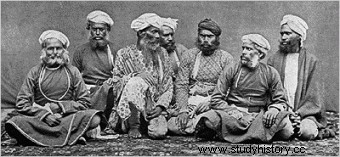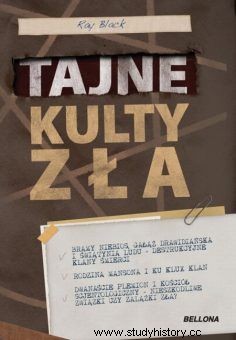Exemplary husbands and fathers by day, and merciless murderers by night. For centuries the brahmanas whom these fanatics sacrificed to their goddess trembled for fear of them. Ordinary gang or secret sect?
In Hindu culture, the goddess Kali is the personification of the life force and at the same time the goddess of death. She is the lady of time and the Keeper of the Gate leading to a world beyond time. The depictions of the goddess show a dark-skinned woman with a blue-painted face. Its inseparable attribute is a necklace of fifty human skulls, symbolizing the same number of incarnations that humans go through. The cult of Kali as the goddess of death is associated with the battlefield and cremation sites. To people brought up in Western culture, it seems dark, and its cult is a bloody, secret rite. Where do these associations come from? Kali owes them to his most famous followers.
A macabre cult
I have never heard of such atrocities, nor have I known about such merciless, cold-blooded murders, such heartbreaking scenes of suffering and anguish; about such blatant ingratitude; about such a complete rejection of the basic principle which binds man to man; which softens the heart and elevates the human being above the animal ... pity for such wretches would be a special cruelty towards mankind ... blood for blood.
F.C. Smith, Representative of the Governor General of India, Calcutta 1832.
The above quote proves how shocked a British official was the news of the activities of a mysterious faction of the Kali followers. Its members called themselves thugs. This mysterious organization was mainly based in the Midwest of India. Not everyone could join a sect, because membership in it was hereditary and passed from father to son. Women could not be members. Besides, in few families the women were aware of the "heritage" of their husbands and fathers.
The sacrificial ritual

Holy murderers or ordinary bandits?
How did the Thugs worship their goddess? Well, they were sacrificing people to her. The sect was divided into groups, each of which had specific functions:"sothaee" lured travelers to the desired location, "bhutto" performed ritual murders, and "lughaee" dug graves for the men sacrificed to Kali.
The act of making sacrifices was strictly subordinated to the ritual. First, the Thugs were looking for a wealthy traveler, or a group of travelers - traders or pilgrims going to celebrate some holiday. Then they joined them and traveled with them. In the meantime, they gained the trust of their future victims and waited for the right moment. During some innocent game, one of the thugs spoke a slogan that was a signal to start the murder. Then the rest of the worshipers of the goddess Kali took out silk scarves with a coin sewn inside and strangled their victims. One might ask what this coin is for. Well, the scarf was tightened so that it was at the level of the cervical vertebrae, and its pressure led to breaking the neck and suffocation. The bodies of the victims were buried and worshipers took their valuables.
Saints or murderers?

"Secret Cults of Evil" published by Bellona. A book about thugs, among others.
The end of the sect came with British rule in India. The new authorities have set themselves the goal of curbing the gruesome "religious practices" of the Thugs. Sir William Henry Sleeman played an important role in this. He conducted an in-depth investigation to discover the practices of the members of the sect and bring them to trial. His findings showed that the Thugs murdered about forty thousand people a year ...
It must not be forgotten that for some the Thugs were practically holy martyrs. They killed not for their own sick pleasure, but by the will of the goddess Kali. Their mistress appeared to them in signs or through an inner voice commanding her to be worshiped with human sacrifices. The Thugs, in their own opinion, were fulfilling the noblest mission that did not burden their conscience in any way.
On the other hand, there is no shortage of scientists claiming that the Thugs… did not exist at all. For example, according to Martine van Woerkens, author of The Strangled Traveler:Colonial Imaginings and the Thugs of India the British occupiers invented them to reassert their power over India. This does not, however, explain the numerous source references and excavated graves. The version that, apart from the "holy murderers", there were also those with much lower motives:the desire to profit and break out of poverty seems more likely.
